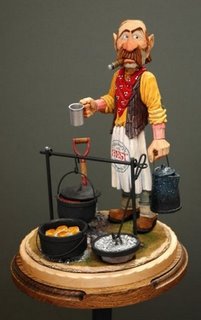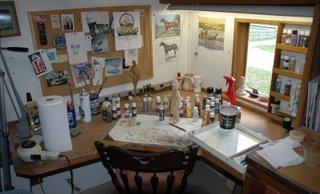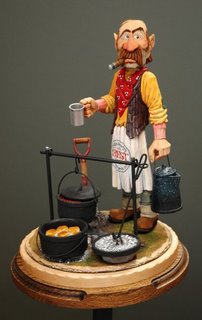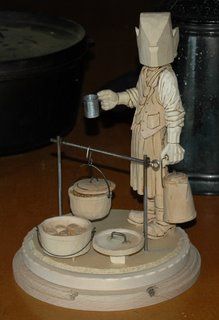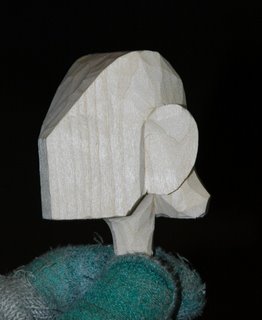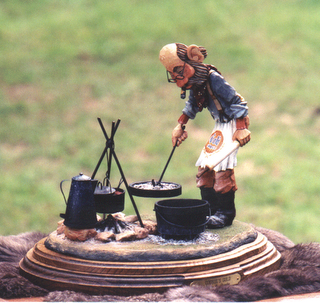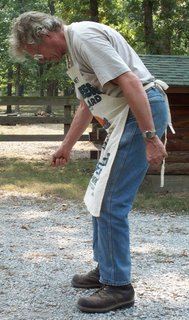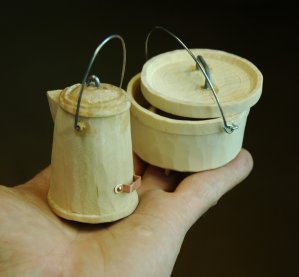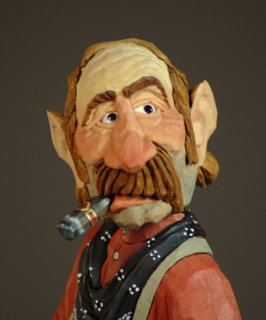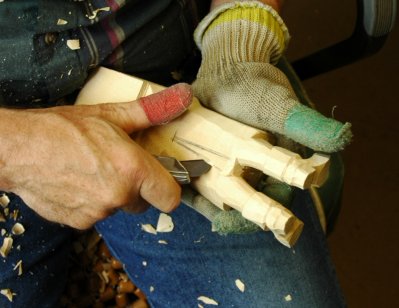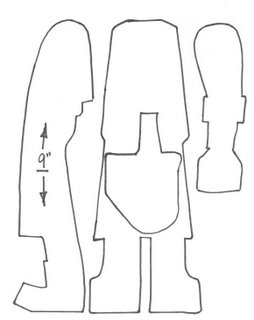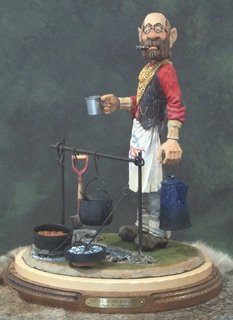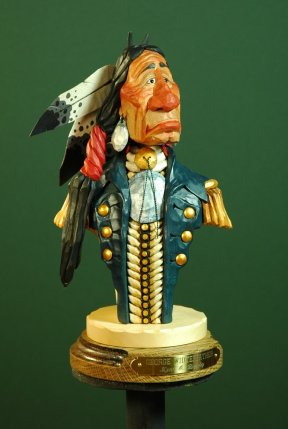
This will be the final chapter in our Cook's journey to a life on the range. So far he's endured cuts and nicks, a couple of transplants, some plastic surgery, he's even been hosed down a few times! But, here he is...looking sharp and skilled in the art of prairie breadmaking and able to cook a pot of beans as good as the best of them.
With this post we will paint the design on the apron and, as a final touch, put a watch in his pocket.
When looking for a design, I always try to locate one that would be correct for the period of the figure. In this case around the early 1900's. I found this Pillsbury logo during a search on the Net. I did away with the outer dark blue ring as it would have been overpowering. The Gold Medal Flour logo also gives good look to any cook. You could even make up your own.
Before you start with the design, go ahead and give your figure a coat of Polyurethane Satin finish varnish. When you buy varnish always try and get the smallest can available. Poly will turn an amber color and thicken over time and when it reaches that point I toss it out. On areas where the paint was heavy the varnish will shine. To prevent this I use a paper towel to carefully wipe off the excess. DO NOT USE CLOTH OR TISSUE! It will leave residue and mess up your piece.
Once the figure is dry go ahead and glue everything in it's proper place. If you think you would like to put a nameplate on the base like I did you can get a nice one, fairly inexpensively and quick, from: www.signsbygwynn.com. I use the A-30 size, double-line block for the title and script for my name.
So, that's it! I hope those of you who carved a cook will send me a photo. I'll put them together and post them here. I plan on starting a new project in the next couple of weeks and will do something aimed at the beginning carver.
Happy Trails!!!

